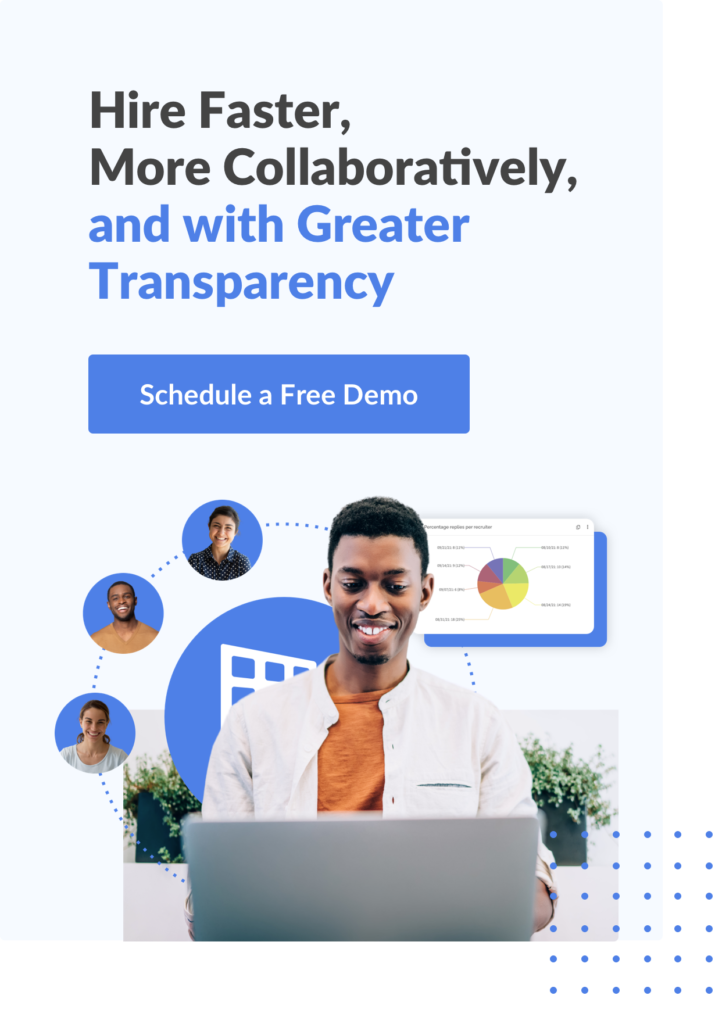Onboarding a recruiter the right way can have a huge multiplier effect. Not only will they make their own hires sooner, but they’ll hire more aligned candidates.
Starting out on the right foot can even positively impact retention rates down the line. And, after you’ve set up a process, it’ll be easy to use it for the next team member.
While you don’t want to give them admin rights to the candidate database before day one, there are plenty of things you can do to get them excited and improve your recruitment process.
We’ve put together a few tips below to get you started:
- Send them an e-card signed by the team with fun messages. So easy to do and makes a big impact.
- Send them a gift! We’ve all seen the LinkedIn posts from new hires opening a box of branded goodies. This is a smart move since it makes the new hire feel welcome, and provides employer branding for your company. And maybe other candidates you want to hire will see that their recruiter connection just joined your company.
- Assign them an onboarding buddy. Get a lovely person from your team to be their go-to person before they start and have the lovely buddy proactively check-in.
Here are a few ideas during their first few weeks:
- Treasure hunt – Create a balance between information that’s given to your new recruiter and things that they need to seek out for themself. Assign them missions: have them find 5-10 recent hires and ask them about their hiring process and why they joined, or name 6 must-meet people in the company – these might be members of the leadership team, veterans, subject matter experts – have them book time with each of person within their first 6 weeks.
- Right information at the right time – The first few days at a new job can be overwhelming with an information firehose. Avoid bombarding them on the first day with everything they’ll ever need to know. Try to space out the information so it’s just in time, and they get it as they need it.
- No surprises! Your onboarding information should build on the information they learned about your company from their own recruiting process.
- Great expectations – Share your goals and targets for them and for the team. Have them write their own, where do they hope to be in 3 months’ time? 12 months’ time? Share with them the codes of conduct, and cultural norms in your workplace, “It’s fine to wear flip flops, but Green Bay Packers shirts are frowned upon.”
- Meet regularly – Set the expectation that you are going to regularly check in and give and receive feedback. A fresh pair of eyes can give you a new perspective on your day-to-day operations. You can touch base for 5 minutes at the end of each day. for the first week. At the end of each week for the first month or two. After that, you’ll catch up during your regular one-on-one meetings.
- Onboarding Board – create an onboarding plan and share it with your new hire. Trello and Notion’s card walls are great for this. Each column can represent a week, slot in goals and tasks for your new hire to complete each week.
- Shadow – Have them shadow recruiters and candidates throughout the process. They can listen in on other recruiters’ phone screens, be a fly-on-the-wall for in-person interviews, attend interview debriefs. It’s so important to hear the thought process behind pursuing or rejecting a candidate.
- Get them recruiting as soon as possible – Sure, it can feel daunting to get started on phone screens when they’re barely in the door themselves, but they’ll learn it all much sooner. Set the tone that it’s all about learning and stay close in case of questions.
- Use real-life situations to knowledge share – Team meetings and stand-ups are rich with scenarios to talk through. This really accelerates new hires’ understanding of your company’s values, dynamics, priorities, and culture. TalentWall™’s wall is a perfect aid for this. “Walking the Wall”, chatting through the candidates in the pipeline brings up lots of real-life prompts that showcase company culture and values.
- Cheat Sheet – Create a place wherever your team centralizes knowledge, that outlines basic info. Some examples include a list of regular meetings and their purpose, what different tools are available, their use (and their admins), where to find info on company benefits, a link to an email signature template, which slack channels to check out, etc.
- Announce their arrival – Introduce them to the company – perhaps an email with their bio, and if they’re game, announce their arrival on LinkedIn. They’ll need to update any social media they use: LinkedIn, Twitter, Facebook, etc to share that they’ve joined the team too. It’s just possible they’ll pique someone’s interest and you’ll get an extra hire.
After 3 Months
Your new hire has likely made their own hires by now, so it’s a great time to check-in and revisit the goals they set for themself. It’s also the perfect opportunity for you both to retrospect on their onboarding process so you can continue to improve going forward.


